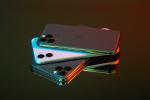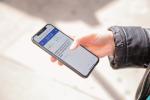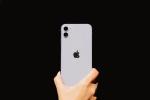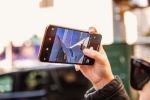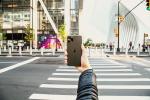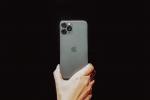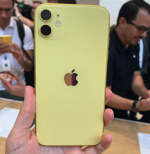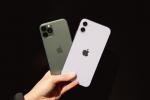Crystal Cox/Business Insider
- Apple's new iPhone 11 and iPhone 11 Pro come with better cameras that can see in the dark and take ultra-wide photos, and offer great battery life.
- But there are some drawbacks that are worth noting, such as the iPhone 11's lack of a fast-charging compatible adapter.
- All three of Apple's new iPhones launched in stores on September 20, with the iPhone 11 starting at $700, the 11 Pro beginning at $1,000, and the entry-level Pro Max being priced at $1,100.
- Visit Business Insider's homepage for more stories.
After much anticipation, Apple's new iPhones launched on September 20.
The new iPhone trio — which includes the iPhone 11, iPhone 11 Pro, and iPhone 11 Pro Max — introduces improvements to the camera like a new ultra-wide-angle lens and the ability to take clearer photos in the dark. Like every recent iPhone, they also run on new processors — this year's version is called the A13 Bionic chip.
The new entry-level iPhone is also slightly cheaper this year compared to the 2018 model. The iPhone 11 starts at $700, whereas last year's iPhone XR began at $750. If you opt for one of the Pro models, you'll be spending at least $1,000 for the iPhone 11 Pro or $1,100 for the larger iPhone 11 Pro Max.
I've been using all three phones over the past several days, and here's a look at the pros and cons I've discovered so far.
Pro: Both the iPhone 11 and 11 Pro offer long battery life.Crystal Cox/Business InsiderApple's new iPhones have more than enough power to comfortably get you through a day and then some on a single charge.
I used the iPhone 11 Pro for a full day and a half and still had 15% of my battery left. That's after I cranked up the display brightness to its maximum for about two hours, which usually drains the battery much more quickly.
The iPhone 11 is also impressive; by the end of the workday I still had 71% of my battery left, indicating that I'd have more than enough juice to get me through a significant chunk of the next day.
Con: The 'notch' is still as noticeable as ever.Crystal Cox/Business Insider
While other smartphone makers like Samsung have done more to make the "notch" cutout that houses the camera and facial-recognition sensors less noticeable, the iPhone's is still as evident as ever.
That makes Apple's new iPhones look slightly less elegant than the Galaxy S10 and Note 10 lineup, which more convincingly create the illusion that the screen stretches from edge-to-edge thanks to Samsung's more subtle hole-punch-like cutout.
However, Samsung's facial recognition is said to be less secure than Apple's, which could be more problematic.
Read more: Apple's iPhone 11 Pro launch is proof that the smartphone industry is going through a massive change
Pro: They can also take crisp and clear photos in the dark — giving Google's Night Sight some serious competition.Crystal Cox/Business Insider
If you frequently find yourself struggling to get good photos in dark conditions — maybe inside a dim bar or restaurant — you'll appreciate the iPhone's new night mode. It automatically kicks in whenever your iPhone detects that you're in a low-light environment, so you don't have to remember to turn it on.
In my testing, I found that it took images that were sharper than those taken on the Google Pixel 3a XL and Samsung Galaxy S10 — both of which offered their own version of night mode long before Apple. The photo I took with the iPhone 11 Pro wasn't quite as bright as the one shot on the Google Pixel 3a XL, but it was a bit sharper and the subject was lit more evenly.
Take a look at the photo samples in our full review.
Con: The iPhone 11 also lacks a fingerprint scanner, meaning you must type in a passcode when not using Face ID.Crystal Cox/Business Insider
If your iPhone experience is anything like mine, Face ID doesn't always work. And even if it does work for you most of the time, you probably still find yourself typing in your passcode occasionally when unlocking your phone while wearing sunglasses, or when you simply don't feel like lifting it up to get an accurate view of your face.
Other phone makers like Samsung, OnePlus, and Google also include fingerprint scanners on their devices as an alternative — some of which are embedded in the display, and others which are located on the back of the device.
Pro: The camera interface lets you see how your shot will look both in wide and ultra-wide mode before you take it.Crystal Cox/Business Insider
Apple is playing catch-up to device makers like Samsung by adding an ultra-wide angle lens to the iPhone. But Apple's software does have a useful touch that Samsung's lacks: the ability to see how your shot may look before you even switch to the ultra-wide-angle lens.
On the iPhone 11 or iPhone 11 Pro, you'll notice that the borders above and below the camera viewfinder where the shutter button and settings are located will gradually become transparent as you frame your shot. That allows you to use that space to see how much more of the scene you'll be able to capture if you switch to the ultra-wide-angle lens.
See the rest of the story at Business Insider
See Also:
- The iPhone 11 is now in stores — here's why you should always buy a screen protector for your new iPhone
- Apple's new iOS 13 iPhone update has a security flaw that lets you bypass the lock screen to view contact lists
- I switch between iPhone and Android whenever I want without losing anything — here's the very simple way I do it
SEE ALSO: How Apple's new iPhone 11 Pro compares to its biggest rival, Samsung's Galaxy S10

